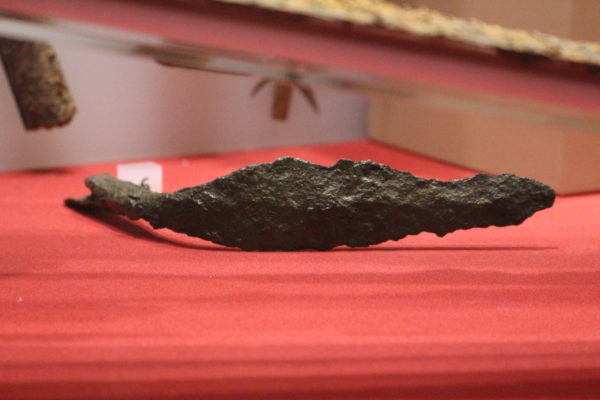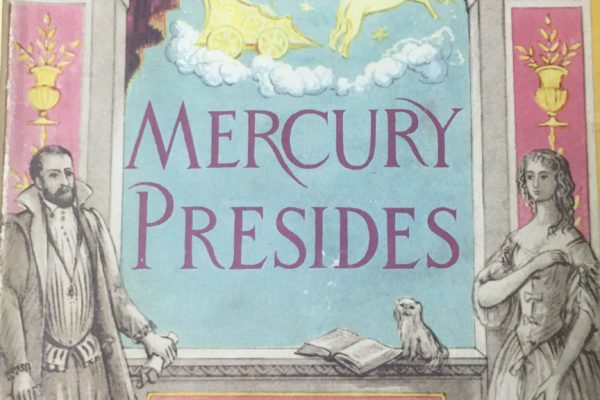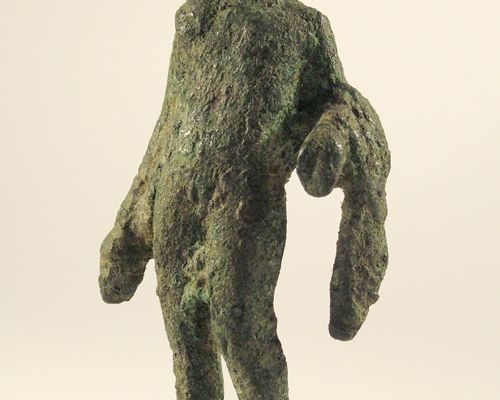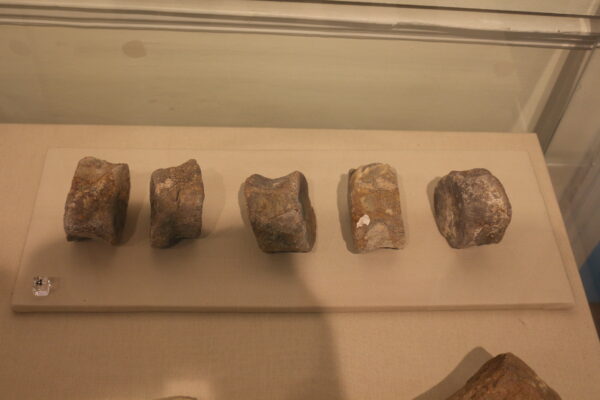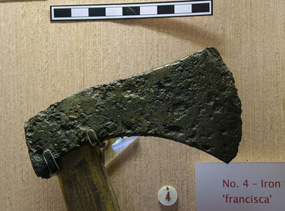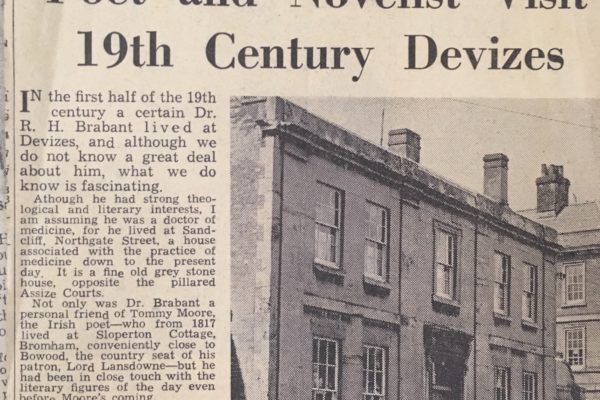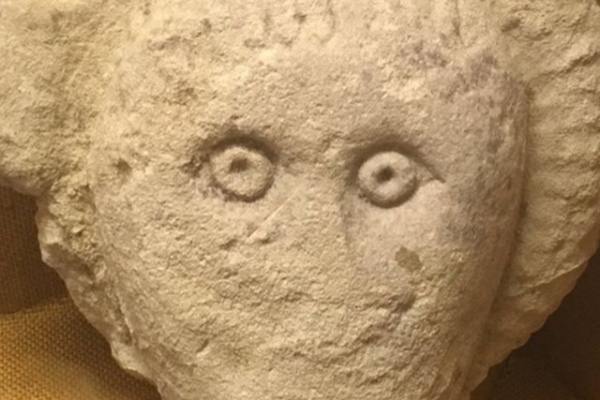Handmade Valentine’s Card
“Would you draw fair Eden nearer and to Earth the angels bring you must seek the magic mirror of a golden wedding ring” In the Museum's Library and Archive are a number of valentines cards sent to or by members of the Kemm family, who lived at Avebury Manor House
Spearhead (Bent)
1 iron spearhead, blade flat, bent at right angles to split socket, found on Rushall Down, Rushall, Wiltshire. The people we call Anglo-Saxons * were originally immigrants from northern Germany and southern Scandinavia. Bede, a monk from Northumbria writing some centuries later, says that they were from some of the
Wiltshire’s famous female authors: Daphne Fielding
Our volunteers have been delving through our Library stacks to shine a light on Wiltshire's famous female authors. We were amazed at how many women writers have links to Wiltshire, many of whom have lived fascinating and colourful lives. Daphne Winifred Louise Vivian Fielding (1904–1997) was a popular author and
Iron Halberd
This iron halberd head was found at foot of Morgan’s Hill, Roundway, Wiltshire, which is the site of the battle of Roundway Down, 1643, stamped Hyland, date unknown. Length 5730 mm; width 1870 mm. Halberd also spelt Halbert or Halbard, weapon consisting of an axe blade balanced by a pick
Bronze statuette of Mercury
1 small bronze statuette of Mercury, found at Ashton Keynes, Wiltshire. The earliest large-scale statues had very simple forms driven by their manufacture, known as sphyrelaton, meaning hammer-driven, in which parts of the statue were made separately and joined by rivets. By the Late Archaic period, ca.500-480 B.C, sphyrelaton was
5 Fossilised Plesiosaur vertebrae
These 5 Fossilised Plesiosaur vertebrae, found at the Kimmeridge Clay, are from the Jurassic period. They were found in the Great Western Railway Works, Swindon, Wiltshire, collection date 1888, part of the William Cunnington III fossil collection. Plesiosaur, any of a group of long-necked marine reptiles found as fossils from
Francisca (Throwing Axe)
In Old English, the Axe was referred to as an æces, from which the Modern English word derives. Most axes found in early Anglo-Saxon graves were fairly small with a straight or slightly curved blade. Such hand-axes mainly served as a tool rather than a weapon, but could have been
Iron Age Carved Heads
Around Europe, what are commonly referred to as ‘stone heads’, are frequently found, often in areas that are known to have been lived in by Celts. In one place in the UK, over 2000 have been found and these are thought to have all been carved by the same tribe.
Roman Civilisation in the South-West
The Roman Empire, by the beginning of the Common Era, had become one of the largest Empires on Earth, rivaled only by the Parthian Empire of the Near-East and the Han Empire of China. However, the political and social doctrine of the Empire necessitated continuous growth into surrounding areas. Britain,



